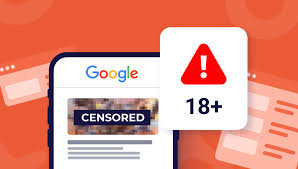In the digital age, Adult sites access to the Internet has become indispensable. However, with that freedom of information also comes exposure to inappropriate content, especially for children. Blocking adult pages on your devices is a crucial measure to ensure a safe online environment.
This article provides you with a comprehensive guide on how to block adult pages on different devices and platforms. We will discuss various methods, from browser settings to parental control software, so you can choose the option that best suits your needs.

Why Block Adult Sites?
There are several reasons why you might want to block adult sites on your devices:
- Protect Children: Adult sites content can be harmful to the emotional and psychological development of children. Blocking these pages prevents exposure to inappropriate material.
- Increase Productivity: Websites with adult content can be a distraction at work or during studies. Blocking them allows you to stay focused on your tasks.
- Limit Malware: Some adult sites websites may contain malware designed to steal personal information or infect devices. Blocking them helps keep you safe from these threats.
- Maintain a Safe Family Environment: Blocking adult sites content creates a healthier family environment and avoids unnecessary conflict.
Check more about: Understanding and preventing DDoS attacks in 2024.

Methods to Block Adult Sites
There are different methods to block adult sites, depending on the device and platform you use:
1. Browser Level Lockout
Most web browsers offer built-in options for filtering content. Here’s how to do it in some popular browsers:
- Google Chrome: Open Settings > Privacy & security > Security. Activate the “Safe browsing” option. You can opt for a standard or enhanced level of protection.
- Mozilla Firefox: Open Menu > Options > Privacy & security. Under “Content blocking”, check the “Smart Block” and “Block malicious and misleading content” checkboxes.
- Microsoft Edge: Open Settings > Privacy, search and services > Choose a default search provider. Check the “Block malicious sites and downloads” checkbox.
- Safari (Mac): Open Safari > Preferences > Security. Check the “Block pop-ups” and “Ask for confirmation of fraudulent websites” checkboxes.
Please note that the browser’s content filtering options may vary depending on the version you are using.
2. Browser Extensions
There are browser extensions that specialize in blocking adult content. These extensions typically offer a more granular and customizable level of filtering than the browser’s built-in options. Some popular adult content blocking extensions include:
- Adblock Plus
- Web Filter
- Kaspersky Safe Kids (Free)

3. Parental Control Software
For more complete protection, you can opt for parental control software. This type of software allows you to set web content filters, control screen time, monitor online activity and block inappropriate applications. Some popular parental control options include:
- Qustodio
- Net Nanny
- Norton Family
- McAfee Safe Family
Consider the following: Parental control software usually requires a monthly or annual subscription. Be sure to do your research and choose the option that best suits your needs and budget.
4. DNS Level Blocking
DNS servers translate web domain names (such as [invalid URL removed]) into IP addresses. Some Internet Service Providers (ISPs) offer the ability to set up a DNS filter that automatically blocks access to adult websites. There are also third-party DNS filtering services that you can use.
Please note: Setting up a DNS filter at the network level may require some technical knowledge. Consult your router or ISP manual for specific instructions.
Additional Tips
In addition to blocking methods, here are some tips for maintaining a safe online environment:
- Talk to your children: Have an open and honest conversation with your children about the dangers of the Internet and the importance of safe surfing.
- Educate about strong passwords: Teach your children to create strong, unique passwords and not to share them with anyone.
- Keep software up to date: Be sure to keep your operating system, web browser and any security software you use up to date. Updates often include security patches that fix vulnerabilities that could be exploited by malicious websites.
- Be careful with links: Don’t click on links from unknown sources or suspicious emails. These links may direct you to adult websites that contain malware or other harmful content.
- Use safe search: Most search engines offer a safe search option that filters results to eliminate adult content. Turn this option on if you are searching for information with your children.
- Be a role model: Lead by example. Demonstrate safe surfing habits and avoid accessing adult content in the presence of your children.

Blocking adult sites is just one part of a comprehensive strategy to ensure online safety. By combining these methods with open communication and education, you can create a safer digital environment for you and your family. Remember, online safety is an ongoing responsibility, so stay informed and up-to-date on emerging threats and best surfing practices.
Final note: Laws and regulations regarding adult content may vary depending on your location. Be sure to comply with local laws when using web content blocking methods.
